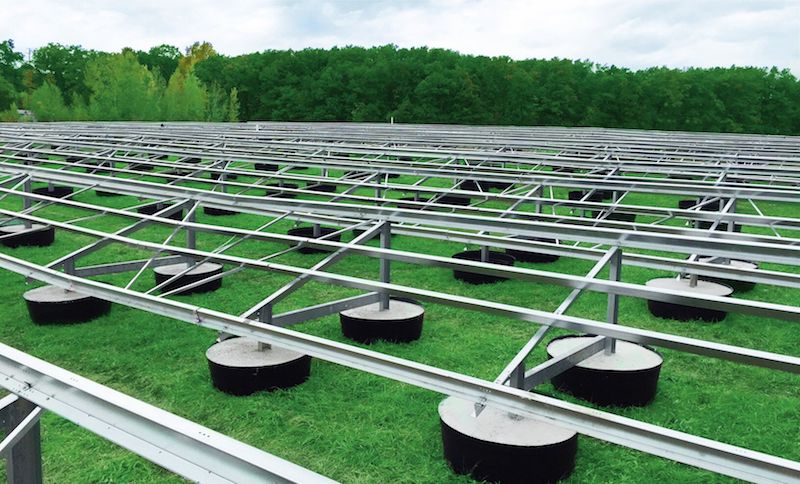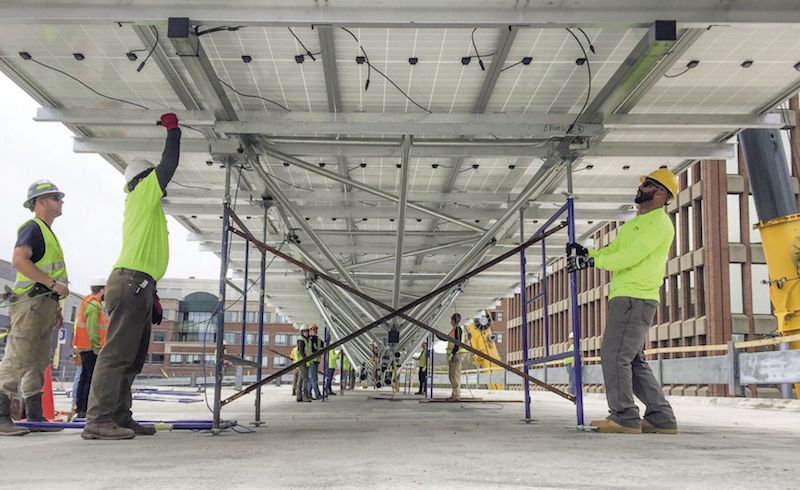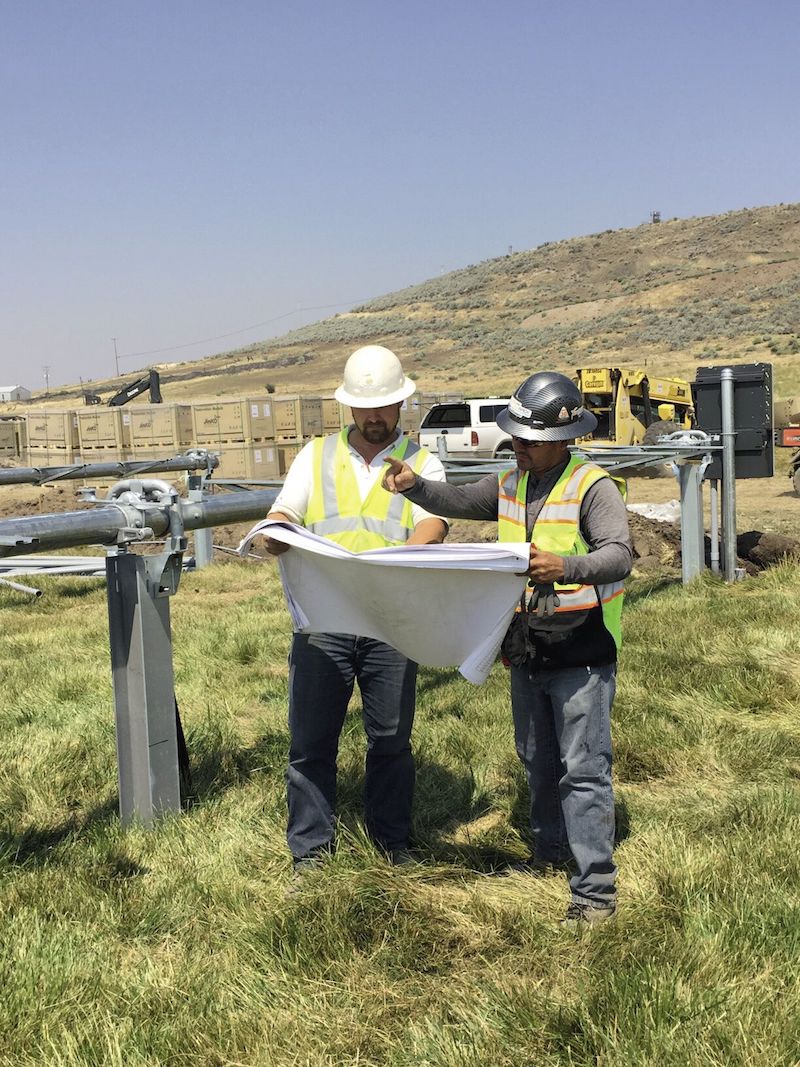At the Solar Power International trade show, held in September in Las Vegas, the Section 201 petition was on everyone’s lips. A session at 8:00 a.m. on the first morning of the show featured solar industry leaders presenting an impassioned case for everyone in the industry to get involved.
However, despite these pleas, no one knows for sure what is going to happen. At the time of writing this article, the U.S. International Trade Commission (ITC) had not yet found injury, however it did not look good for opponents of the trade case. Beyond the injury finding there are still multiple layers of uncertainty, given that it is still unknown what trade remedies the ITC will recommend, or what the Trump Administration will finally choose to do.
If a significant trade action is taken, there are reasons to conclude that, unlike previous trade cases, it will likely have noticeable impacts on the U.S. market, which could last for a number of years. But this is not a matter of waiting for the effects, as it has not taken a finding of injury for changes in the market to become visible.
Current impacts
Not long after the ITC chose to investigate this case in April, the effects were already being reported. The first is that construction contractors and solar installers began hoarding modules, a phenomenon which continued at least through to September.
By August, GTM Research was reporting that Tier-1 module makers were sold out through the end of the year.
This in turn drove up prices. In September, BNEF gave similar numbers to the two developers and construction contractors contacted by pv magazine, in stating that the average price of U.S. modules has risen 40%, from $0.32/W to $0.45/W since the beginning of the investigation. The result is that modules are being sold in the U.S. at a significant premium on the average global price.
“There was only so much surplus capacity that was able to be reallocated to the United States,” GTM Research Associate Director of U.S. Solar Cory Honeyman explained.
This is where modules are available at any price. As the result of this stockpiling of modules, many construction contractors have secured modules for utility-scale projects through the end of 2017, and some have modules for projects which are planned to begin construction in 2018 as well.
Beyond that, however, things look dicey, particularly for the utility-scale market. According to the U.S. Department of Energy’s National Renewable Energy Laboratory, module costs made up about a third of the total cost of a typical utility-scale system during Q1 2017, as opposed to a fifth of the cost of a commercial system and only an eighth of the cost of residential systems, so any changes to these prices will hit the utility-scale market hardest.
The second major impact that is being widely reported is that pending contracts for utility-scale projects are not being concluded until there is more certainty. This is something that came up as a bomb during an August hearing on the 201 investigation, with BNEF Head of North America Research Amy Grace stating that solar contract signing ground to a halt when the investigation commenced.
Since these contracts were mostly for projects which would be completed in 2018 or later, this is not showing up yet on statistics for projects that are under construction or completed, and instead is something that will hit the market in future quarters.
Trouble brewing
While the injury finding had not yet been announced when this article went to press, pv magazine was not the only party estimating that the odds of a such a finding were at least 50/50. While the Solar Energy Industries Association (SEIA) has described SolarWorld and Suniva as “flawed” companies, a draft report issued by ITC staff in August found that 26 U.S. module manufacturers had shut down in the past five years, as the share of the U.S. market served by domestic production continues to fall.
As such, unless choosing to manufacture PV cells and modules in the United States is considered an inherently bad business decision, the argument that Suniva and SolarWorld’s woes are entirely due to poor business practices is difficult to defend. When questioned by pv magazine on which companies are still making crystalline silicon PV in the United States at scale, SEIA was able to name a few companies. However, none of these had more than a few hundred megawatts of annual production, and some – like Mission Solar Energy – have suffered significant downsizing and layoffs in recent years.

Under the leadership of new CEO Abigail Hopper, SEIA quickly came out against the 201 petition, and has mobilized significant support both within and outside of the solar industry. However, as the ITC is an independent body, all of whose members were appointed by past presidents, it is remarkably insulated from political pressures.
A better card for SEIA is that the U.S. solar manufacturing sector is far from united behind this petition. While pv magazine was unable to find final numbers, an inconvenient fact for the petitioners is that solar cell and module production employs only a small portion of the estimated 38,000 workers who spend at least half their time making solar products.

The leadership of a much larger portion, the mounting structure and tracking equipment makers, have come out very strongly against the Section 201 investigation. In an August letter, the CEOs of the top companies in this sector, including PanelClaw, GameChange Solar, Schletter, Unirac, and Quick Mount PV, pleaded with the ITC not to damage their businesses with an injury finding. All in all, these companies say that they represent 5,700 employees – which is around three times as many as SolarWorld and Suniva had at the peak of employment. SolarWorld has countered in the past that such low levels of cell and module employment are due to unfair competition from China, but there is also the matter of automation. This led Sunrun Chair Ed Fenster to describe the relief sought by Suniva as a “robot full employment tariff” at the SPI trade show.
Trade action
Assuming that the ITC does find damages, there is a high likelihood that the Trump administration will follow with some form of protectionist trade action. Despite the widespread use of Chinese factories to make Trump brand products, as a politician he is an economic nationalist. He has also shown a willingness to defy his own party on certain issues, including this one.
President Trump’s statements and actions have been quite consistent in this regard. The “bring me some tariffs” comment leaked to news site Axios only adds to earlier moves against Canadian lumber and milk, which showed that Trump is willing to alienate even the USA’s closest allies when it comes to trade.
The president’s disparaging statements about solar on the campaign trail adds a layer of strangeness to the idea that Trump would move to protect an industry that he doesn’t believe is an important part of the energy future. However, he is no stranger to contradictions, and this brings another level of uncertainty to an already precarious situation.
But there is the possibility that the Trump administration will simply pass whatever the ITC recommends, and the kind and level of trade action that the ITC may propose is not clear. There is nothing that forces the agency to adopt the measure suggested by Suniva, and in fact, according to GTM Research, the two-decades old body has not imposed a minimum price – one part of Suniva’s proposal – through a Section 201 case to date.
“We’ve seen basically either tariffs, quotas, or tariff rate quotas (once a quota is hit, you go to a tariff),” explains GTM Research’s Honeyman.
And in the propaganda war waged between Section 201 proponents and opponents, a possibility that has not been widely explored is that the ITC will rule in favor of damages, but propose a more measured response than Suniva’s extreme proposal.
Modeling impacts
As there is no way of knowing what the ITC will recommend or what the Trump administration will do with that recommendation, analysts to date have settled for modeling the impacts of Suniva’s proposed trade remedies. And for these, the expected market impacts are severe, particularly for utility-scale solar.
GTM Research is forecasting that Suniva’s minimum module price proposal alone would result in a 50% reduction in the future U.S. solar market over five years, as compared to a market forecast with no minimum price. However, if you add in Suniva’s proposed cell tariff, which starts at $0.40/W, this goes up to a 66% reduction.
SEIA has likewise issued dire warnings, repeatedly stating that Suniva’s proposals for trade actions could cost up to 88,000 jobs throughout the solar industry. Suniva and SolarWorld have countered that trade remedies would add up to 144,000 net jobs. However, a brief report by Suniva’s law firm does not appear to factor in reductions in the market due to higher prices.
A more compelling argument by SolarWorld and Suniva is that warnings about the outcome of tariffs in the 2012 and 2014 trade cases proved utterly wrong. Both GTM Research and the Coalition for Affordable Solar Energy, for which Jigar Shah served as spokesperson, warned of significant market and job impacts if trade duties on China were imposed. Yet two rounds of antidumping and anti-subsidy tariffs approved in 2012 and 2014 resulted in no noticeable impact on the U.S. solar market, which continued to grow and add jobs every year.
However, the Section 201 trade case is different to previous cases. As a response to tariffs, Chinese PV makers successfully avoided tariffs first by using Taiwanese modules, and then by building factories in Southeast Asia. That will not work this time, as the Section 201 process applies not to one or two nations, but all solar imports.
Building U.S. manufacturing capacity is not something that Chinese companies have written off. Seraphim Solar has reported that it has opened a line in its long-awaited factory in Mississippi, and since the beginning of the investigation several companies have told pv magazine that they were considering U.S. manufacturing facilities, including a large Chinese state-owned corporation.
However, even factories already planned will take at least a year to build. This means that in the event of significant trade action, all supply will have to come from the limited cell and module capacity remaining in the United States, Tesla’s new factory in New York, and thin film products, which are also exempt from tariffs. This may be the worst possible time for the latter, given that one of the two thin film PV makers with more than a few hundred megawatts of capacity, First Solar, is midway through retooling its factories.
More questions than answers
There are still far too many unknowns to be able to say with any confidence what will happen to this industry and the market. And while it’s anyone’s guess what the future will hold, what is clear is that the U.S. market is in grave danger, at least in the near term. And even if the ultimate result is either no trade barriers or symbolic tariffs, in the interim the uncertainty is highly damaging.
“There are real challenges in terms of how you plan for 2018 with this looming over your pricing strategy,” notes GTM Research’s Honeyman.
The resiliency of the U.S. PV industry and market should not be underestimated. The market has survived many challenges before, particularly at the state level. While these are too numerous to detail, Nevada’s solar market shows a story where even the worst-case policy scenario for distributed solar was later overturned, leading to market revival.
Regardless, the U.S. solar industry is in clear danger, and there could be some very difficult times ahead for all of us. For now, SEIA and a broad spectrum of the U.S. solar industry is engaged in lobbying against new tariffs, in anticipation of the ITC’s recommendation for trade action on November 13.
This content is protected by copyright and may not be reused. If you want to cooperate with us and would like to reuse some of our content, please contact: editors@pv-magazine.com.
